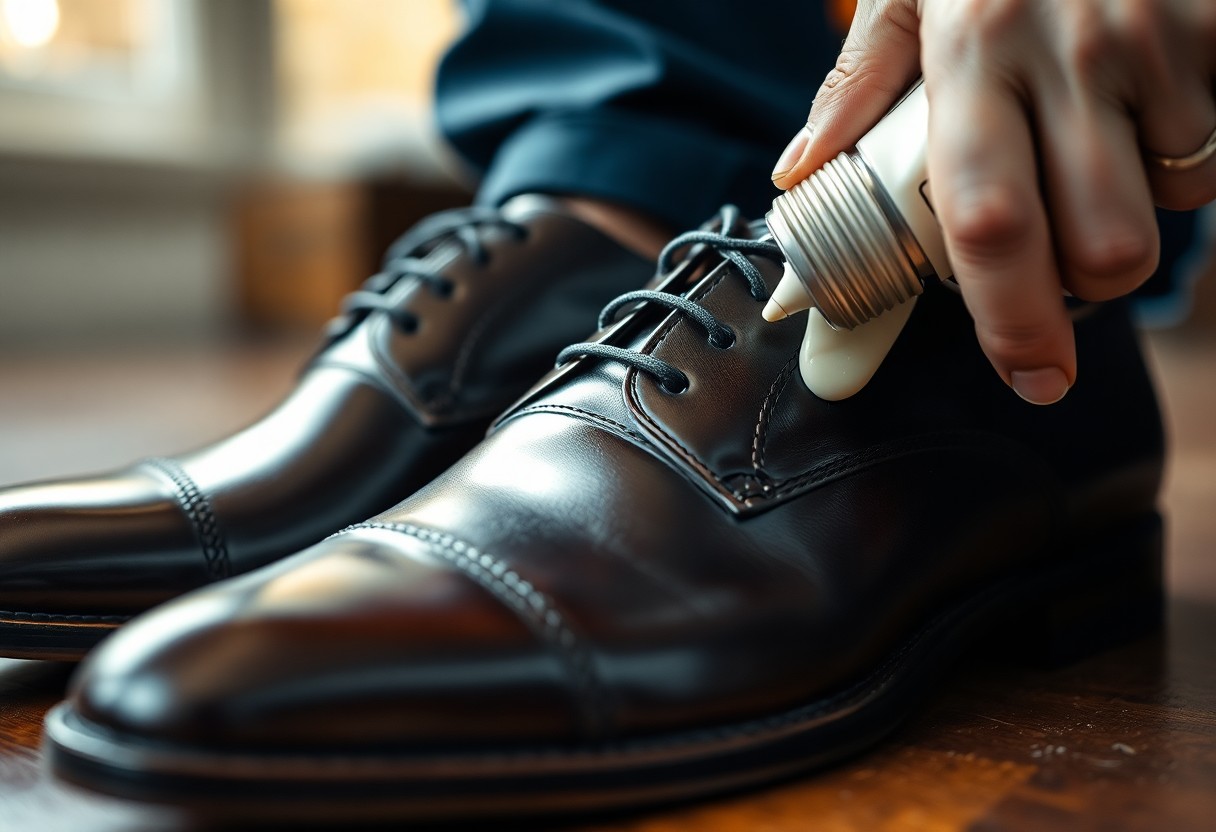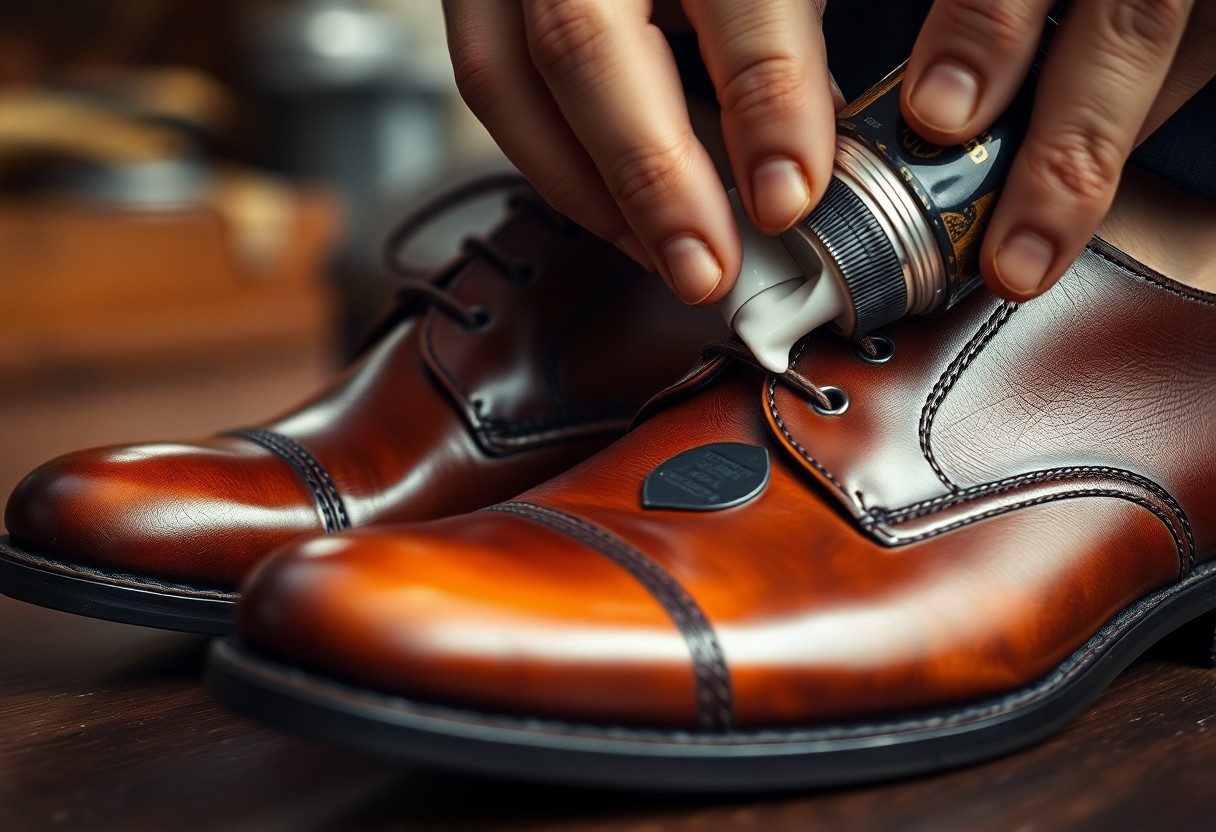Transforming your leather shoes with darker shoe cream can significantly enhance their aesthetic appeal, elevating them to a new level of elegance and sophistication. By applying several thin layers of cream in progressively darker shades, the outcome can closely resemble a professional finish. It's essential to begin with a cream color that matches your shoe’s initial hue to prevent any inconsistency in color. For the best results, choose premium pigmented creams from trusted brands like Saphir Medaille d’Or or Boot Black. This technique works particularly well on lighter-colored shoes, where you will observe the most dramatic transformation while maintaining a natural finish.
Ultimate Guide to Effectively Enhancing Your Shoe Color
Enhancing the color of your shoes requires meticulous preparation and high-quality materials. Start by creating a clean, well-lit workspace that allows you ample time to layer the cream properly. Before commencing, ensure that your shoes are thoroughly cleaned and completely dry. This initial step is crucial for achieving a consistent and long-lasting finish that can withstand everyday wear and tear.
Essential Equipment for Successful Shoe Cream Application
To avoid mishaps during your shoe color enhancement journey, gather these necessary tools: application brushes, polishing cloths, and masking tape to safeguard the soles. Additionally, have high-pigment shoe creams like those from Saphir Medaille d’Or or Boot Black at hand. Don't forget to include cleaning supplies and a quality leather cleaner to prepare your shoes effectively before applying the cream.
Selecting the Perfect Cream Colors for Stunning Results
As you embark on enhancing the color of your shoes, it's crucial to choose shoe creams that will gradually help you achieve your desired shade. Start with a cream color that closely mirrors your shoe’s original tone, then transition to darker shades as you progress. This incremental approach is especially important for light-colored shoes to avoid any uneven coloring that could detract from the overall aesthetic.
Your selection of tools and creams greatly influences your final results. Ensure your cream options include a base color that matches the original shoe shade, along with 2-3 darker shades for layering. Using high-quality pigmented creams from renowned brands like Saphir, Boot Black, or Collonil 1909 will guarantee optimal color enhancement. Light-colored shoes offer a chance for a more pronounced darkening effect, while darker shoes will require more subtle adjustments to maintain a refined appearance.
Understanding Color Theory for Expert Shoe Coloring
Grasping how colors interact is vital for achieving a polished finish when darkening your shoes. Basic color theory can help you steer clear of common mistakes, such as uneven application or inappropriate shade choices. By utilizing the color wheel, you can understand the relationships between colors like browns, blacks, and burgundies, thereby enhancing your ability to predict how different shoe creams will affect the final look of your leather footwear.
Progressing Gradually from Lighter to Darker Shades
One of the most important guidelines in shoe coloring is to gradually transition from lighter to darker shades. The effectiveness of this technique lies in making small, incremental adjustments. For instance, a light brown shoe can evolve into a medium brown and subsequently to dark brown, while reverting to lighter shades is not recommended. Each layer of cream should be slightly darker than the previous one, ensuring optimal results.
Comprehending Color Depth for Superior Results
Darker shoe creams contain higher concentrations of pigment, enabling them to significantly modify the appearance of your shoes. Always conduct a test on a small, inconspicuous area before applying cream to the entire shoe. High-quality creams like Saphir Medaille d’Or or Boot Black offer superior color control and more consistent results, ensuring greater satisfaction with the finished product.
The success of your color enhancement largely depends on the techniques you employ while layering. Applying multiple thin layers yields far better results than applying a single thick coat. Begin with 2-3 layers of a lighter shade before advancing to darker tones. This method guarantees even coverage and helps to prevent patchy or blotchy results that could compromise your shoes’ overall allure.
Important Pre-Treatment Steps for Effective Shoe Cream Application
Before applying darker shoe cream, it’s crucial to adhere to a specific sequence of preparatory steps. Ensure your shoes are completely dry and at room temperature to facilitate optimal cream absorption. This phase includes removing any old polish, cleaning the surface thoroughly, and protecting areas you wish to remain uncolored. Following these initial steps will help prevent uneven coloring and result in superior outcomes that meet your expectations.
Thorough Techniques for Cleaning Shoe Surfaces
To begin, it’s essential to complete a comprehensive cleaning of your shoes. Use a leather cleaner to eliminate all dirt, old polish, and oils. Your cleaning routine should be gentle yet effective, focusing on creases and seams where residues tend to accumulate. A spotless surface allows the shoe cream to penetrate evenly, which is vital for achieving a flawless finish that enhances the beauty of your footwear.
Expert Masking Techniques for Shoe Protection
Proper masking of your shoes is crucial for achieving professional results. It is essential to protect the sole edges, welts, and any contrasting stitching using masking tape. This precaution will prevent unwanted staining and help maintain the original appearance of these elements, ensuring that your efforts result in a polished outcome.
Surface protection involves careful application of masking tape along the edges where the upper part of the shoe meets the sole. Make sure to cover any decorative features or light-colored stitching that you wish to preserve. Based on experiences with Midas boots and TLB Mallorca Artista shoes, adequate masking can save hours of cleanup and yield clean, professional results that you can take pride in.
Step-by-Step Process for Expertly Darkening Shoes
To achieve outstanding results when darkening your shoes, it’s vital to follow a methodical approach. This process involves gradually building color using high-quality pigmented shoe creams. Light-colored shoes are generally easier to darken, but they require careful attention to detail to avoid uneven coloring. Your success heavily relies on the tools you employ and the technique of applying multiple thin layers instead of a single thick coat.
Creating the Base Layer for Effective Color Enhancement
This stage marks the foundation of your color enhancement journey. Begin with a shoe cream shade that closely resembles your shoe’s original color. Use an application brush to handle the edges and a polishing cloth for the main surfaces. Always protect the sole edges and stitching with masking tape to prevent any unwanted staining. Your initial layer acts as a base for the richer colors to follow, ensuring optimal adherence of subsequent layers.
Developing Color Depth with Layering Techniques
As you apply multiple layers, gradually introduce darker shades. Focus on applying thin, even layers using high-pigment creams such as Saphir Medaille d’Or or Boot Black. Apply 2-3 layers of each shade before moving on to a darker tone. This method ensures that your shoes develop a rich and uniform color that enhances their overall elegance.
Further enhancement relies on your technique and patience. The final results are determined by how effectively you work the cream into the leather. Utilize circular motions with your cloth to guarantee even distribution. Allow each layer to dry completely before applying the next. This careful approach can transform light brown shoes into deeper tans or add richness to burgundy hues.

Mastering the Multi-Layer Technique for Exceptional Color Enhancement
Not every color enhancement needs to be completed in one sitting. Your success depends on patience and gradual application. This technique entails applying multiple thin layers of shoe cream, starting with lighter shades and progressively transitioning to darker ones, ensuring an even and professional finish that reflects your dedication and skill.
Starting with Lighter Initial Layers for a Flawless Transition
The multi-layer application process begins with a shade that closely matches your shoe’s original color. Avoid applying dark cream immediately, as this can lead to spotting and inconsistent coloring. Apply 2-3 thin layers of light-colored cream, allowing each layer to dry for about 15 minutes before proceeding to the next application. This methodical approach will prepare your shoes for a beautifully darkened finish.
Incorporating Darker Layers for Enhanced Depth and Richness
Once your lighter base is established, you can gradually add darker cream layers. Choose high-quality pigmented creams like Saphir Medaille d’Or or Boot Black for optimal results. Apply the cream using gentle circular motions to ensure thorough coverage while preventing excess product buildup that could detract from the overall finish.
For the best results, pay special attention to hard-to-reach areas near the sole edges. Always conduct a test on a small, hidden area first to avert any unwanted color reactions. Continue layering until you achieve your desired shade, which typically requires 3-4 applications of the darker cream to reach the perfect tone.

Key Considerations for Successful Shoe Color Enhancement
Unlike traditional shoe care, enhancing color demands careful consideration of leather properties and appropriate product selection. It is essential to understand your shoe’s base color, leather type, and the desired outcome before you begin the darkening process. The effectiveness of your color enhancement largely relies on your technique and patience in applying multiple thin layers for the most favorable results.
Recognizing the Variability of Different Leather Types
Different types of leather respond uniquely to color enhancement:
| Leather Type | Color Enhancement Properties |
|---|---|
| Full-grain | Exceptional absorption, consistent results |
| Top-grain | Good absorption; requires meticulous application |
| Suede | Not suitable for cream treatment |
| Patent | Incapable of effective cream absorption |
| Corrected-grain | Limited absorption; inconsistent results possible |
Addressing Common Problem Areas During Application
Common issues frequently arise near seams, creases, and toe areas. It’s crucial to apply cream with extra caution in these regions to prevent excessive color buildup. Identifying potential problem spots before you start will aid in avoiding uneven coloring, ensuring a smoother application process.
At the beginning of your color enhancement project, test the cream on a small, hidden area to assess its effects before proceeding further. Your meticulous attention to detail in these sensitive areas will significantly influence the final quality of your shoe’s appearance. Pay close attention to the welt area, where excess cream can easily accumulate and create uneven patches.
- Apply lighter coats to creases to prevent heavy buildup
- Avoid excess product near stitching to maintain integrity
- Use masking tape to protect the soles from accidental staining
- Work in small sections for optimal results and control
Common Inquiries Regarding Shoe Color Enhancement
What is the best way to begin darkening light-colored shoes with shoe cream?
Start by selecting a shoe cream color that is the closest match to your shoe’s original shade. Apply several thin layers using high-pigment shoe cream brands such as Saphir Medaille d’Or or Boot Black. Be sure to cover sole edges and stitching with masking tape to protect them throughout the process. Apply 2-3 layers of the lighter shade before transitioning to darker colors for the best outcome.
Which tools are recommended for applying shoe cream during the color enhancement process?
Utilize an application brush to reach difficult areas near the sole edges, and a polishing cloth for the main surfaces, to distribute the cream evenly into the leather. These tools enable comprehensive coverage and a smooth application across all shoe areas, contributing to a more polished finish.
What strategies can I implement to ensure an even color result when darkening shoes?
To achieve a uniform finish, apply multiple thin layers rather than one thick layer. Start with a lighter shade and gradually transition to darker shades. Use gentle, circular motions with your cloth to work the cream into the leather, ensuring each layer dries completely before the next application. This method effectively prevents spotting and creates a smooth, uniform finish that enhances the overall look of your shoes.
The Article How to enhance shoe color using darker shoe cream tips for a polished look appeared first on My Shoes Finder
The Article Enhance Shoe Color with Darker Shoe Cream Tips for a Polished Look Was Found On https://limitsofstrategy.com
The Article Darker Shoe Cream Tips for a Polished Shoe Colour Enhancement First Appeared ON
: https://ad4sc.com













Armelle Thompson
I really appreciate your insights on transforming leather shoes with darker shoe cream! I’ve actually experimented with this technique myself, particularly on a pair of tan oxfords that had seen better days. I started with a matching cream, as you advised, and gradually moved to a darker shade. The difference was remarkable—not only did the oxfords look rejuvenated, but they also picked up a richness in color that made them feel more sophisticated.